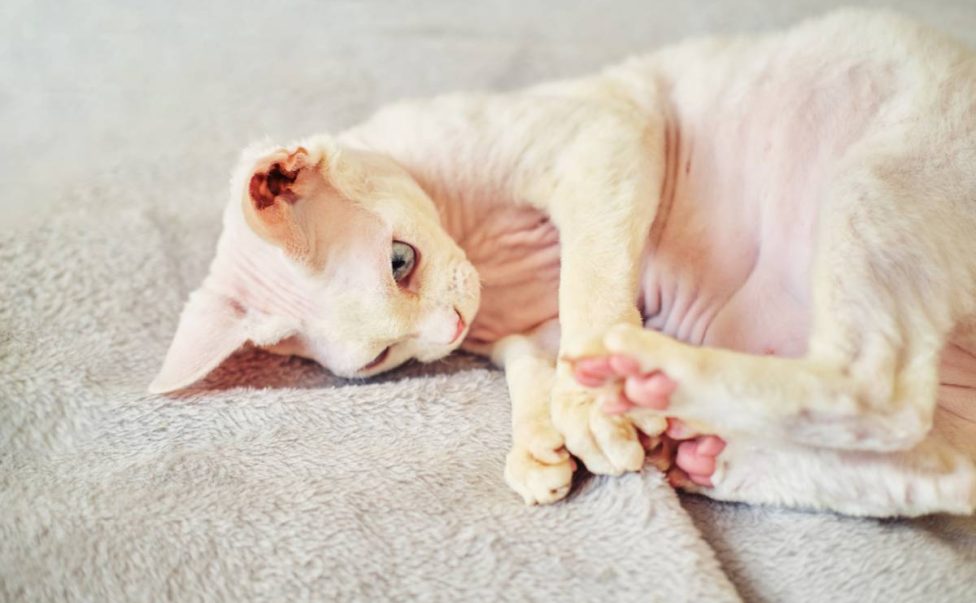Everything You Need to Know About Hairless Cats?
Hairless cats have a striking appearance that immediately captures attention. With their smooth, exposed skin and large, expressive eyes, these cats are unlike any other breed.
While they may look delicate or even exotic, hairless cats are known for their affectionate, playful, and loving personalities.
Whether you’re considering adopting a hairless cat or are simply curious about these intriguing pets, it’s important to understand the different types of hairless cats, their special care requirements, and what to expect in terms of their lifespan.
In this article, we’ll delve into the various breeds of hairless cats, share essential tips for their care, and explore how long these fascinating creatures can live.
How Many Types of Hairless Cats Are There?
While there are several types of hairless cats, the most famous and well-known is the Sphynx, but it’s not the only breed. There are a few other breeds of hairless cats, each with its own unique traits and characteristics. Let’s take a look at the most prominent hairless cat breeds.
1. Sphynx
The Sphynx, a hairless cat breed from Canada in the 1960s, originated from a natural mutation. Known for their large ears, muscular build, and wrinkled skin, Sphynx cats are affectionate and energetic.
Though not hypoallergenic, they are beloved for their friendly nature. They enjoy being around people and often seek out attention and warmth. Their unique look and loving personality make them a favorite among cat lovers.
2. Donskoy
The Donskoy, also known as the Don Sphynx, hails from Russia. This breed is often confused with the Sphynx because of its hairless nature, but they have distinct differences.
The Donskoy has a more prominent wrinkled skin and a stocky build. Unlike the Sphynx, Donskoys can sometimes have a thin layer of fuzz on their skin, and some may even grow back some fur, especially as they age.
The Donskoy is friendly, social, and highly intelligent. They are known for their strong bond with their owners and often act like affectionate lap cats.
3. Peterbald
Originating from Russia, the Peterbald is another hairless cat breed known for its sleek, elegant appearance. The breed was developed by crossing the Donskoy with the Siamese breed in the 1990s.
Peterbalds are slender and graceful cats with large ears, almond-shaped eyes, and a smooth or slightly fuzzy coat. While some Peterbalds may be born completely hairless, others may have a soft coat that gradually falls out, leaving them with little to no fur.
Peterbalds are affectionate, curious, and highly active. They are friendly with both children and other pets, making them excellent companions for families.
4. Bambino
The Bambino is a cross between the Sphynx and the Munchkin, which is a breed known for its short legs. This hybrid breed combines the hairlessness of the Sphynx with the playful, unique characteristic of the Munchkin’s short legs.
Bambinos are small, stocky cats with large ears and an expressive face. Despite their short stature, they are energetic, playful, and highly sociable cats that love interacting with their owners.
Bambinos are relatively new to the cat world, having been developed in the early 2000s, and they are still considered a rare breed.
5. Ukrainian Levkoy
The Ukrainian Levkoy is a unique and rare breed that originated in Ukraine. These cats are known for their hairlessness and distinctive folded ears, which resemble those of the Scottish Fold breed. Ukrainian Levkoys have a sleek, muscular body and often display expressive eyes. Their skin is typically soft and smooth, with a slight wrinkling.
Levkoys are very social, affectionate, and playful. They love being around people and can often be found following their owners around the house. Despite their bold appearance, they are gentle and adaptable.
How Do You Take Care of a Hairless Cat?
Hairless cats may not require grooming in the traditional sense, but they do need special care and attention to keep them healthy and happy.
The lack of fur exposes their skin to environmental elements, so their care routines differ from those of their furry counterparts. Here are some essential tips on how to care for a hairless cat:
1. Bathing
Unlike cats with fur, hairless cats must be bathed regularly. This is because they still produce oils on their skin, but without fur to absorb them, the oils can build up and make their skin greasy. Regular baths will help remove excess oils and dirt, ensuring their skin stays healthy and free from infections.
It’s recommended to bathe your hairless cat every 1-2 weeks. Use a mild, cat-safe shampoo and lukewarm water. Gently massage the shampoo into your cat’s skin and rinse thoroughly. Make sure to dry your cat completely after the bath, as hairless cats can get cold more easily than their fur-covered counterparts.
2. Skin Care
Hairless cats are more susceptible to skin problems because their skin is exposed to the elements. To protect their skin, you should apply a sunscreen specially designed for cats if your cat spends time outdoors.
This will help prevent sunburns, as hairless cats are more prone to sun damage.Additionally, it’s important to keep your cat’s skin moisturized. You can use a pet-safe moisturizing lotion or oil to prevent dry, flaky skin.
3. Temperature Sensitivity
Hairless cats are sensitive to temperature changes. They are more prone to getting cold in the winter and overheating in the summer. During colder months, consider dressing your cat in a comfortable cat sweater to keep them warm. During hot weather, provide plenty of shade and cool areas to prevent overheating.
4. Diet and Hydration
A balanced diet is crucial for maintaining your hairless cat’s health. Make sure they have access to high-quality cat food that provides the essential nutrients they need. Proper hydration is equally important, so ensure your cat always has access to fresh water.
In addition to physical health, mental stimulation is vital. Toys that encourage movement and interaction, such as laser pointers, are great for engaging your cat’s hunting instincts.
Hairless cats often enjoy chasing laser dots, which mimic prey and provide a fun outlet for their energy. Just be sure to let your cat “catch” a toy at the end of the game to avoid frustration.
5. Regular Vet Visits
Regular vet checkups are important for all cats, but especially for hairless breeds, as they may have specific health issues. A vet can monitor your cat’s skin condition, check for any signs of infections or skin problems, and make sure they are in overall good health.
How Long Do Hairless Cats Live?
The lifespan of a hairless cat generally ranges between 12 to 16 years, although some cats can live even longer with proper care.
The lifespan may vary depending on the breed, genetics, and overall health. Regular vet checkups, a balanced diet, and proper grooming practices can help ensure that your hairless cat lives a long, healthy life.
Hairless cats are generally healthy, but like all breeds, they can be prone to certain health conditions. For example, Sphynx cats are more likely to develop heart conditions, such as hypertrophic cardiomyopathy, so regular veterinary checkups are essential.
Conclusion
Hairless cats are unique and charming pets that require special care to ensure their health and happiness.
Whether you are interested in adopting a Sphynx, Donskoy, Peterbald, Bambino, or Ukrainian Levkoy, understanding the specific needs of these cats will help you provide them with a loving and comfortable environment.
By paying attention to their grooming needs, skin care, temperature sensitivity, and overall health, you can ensure your hairless cat enjoys a long, healthy life. With the right care, these fascinating cats will make wonderful companions for many years to come.


